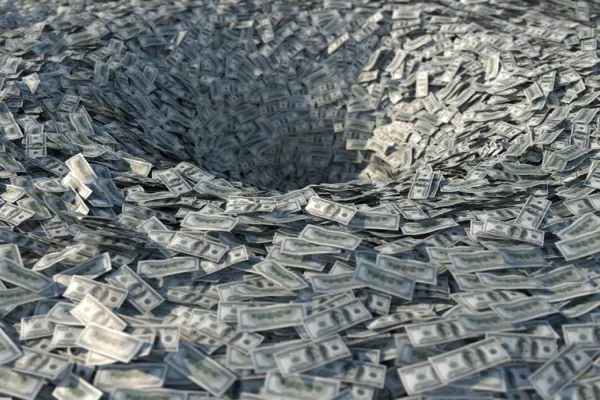Since the beginning of this year, there have been consistent expectations of an impending recession as the result of runaway inflation and historic rate hikes. Prices have been threatened by macro conditions, lending standards have tightened, and decreased consumer demand has started to put a strain on the financial system as a whole - but 2008 this is not.
“I think the assumption has been over the last 18 months that we are heading into a recession, but I would say the high yield market has never been set up better for a recession scenario. You’re not seeing a lot of the things you would expect to see right before an economic downturn. Notably, there has not been a very aggressive stance taken by high yield issuers from a leverage perspective,” says Timothy Rabe, head of high yield for MetLife Investment Management (MIM).
“Really when you look at high yield in a vacuum, fundamentally, we’re set up well,” Rabe notes.
“Looking at gross leverage in the high yield space, we continue to see it trending downward. We haven’t seen issuers or LBOs come to our market with increased leverage profiles that you would normally expect to see when you’ve had a long period of stable or low all-in yields,” Rabe adds.
“Historically in my career, the longer a rally happens, and spreads stay tight, you get dividend deals, subordinated deals, you get leveraged financial transactions. I believe the reason that didn’t happen here isn’t because our market got more disciplined in a rally, but because we didn’t have the opportunity this time around,” Rabe says. “A lot of the LBOs decided from a callability perspective to access leverage through the leveraged loan market, which is predominantly fueled by the CLO machine.”

The high yield market held solid in 2021, returning slightly over 5%, before experiencing considerable volatility and losing over 11% last year.
A surge in private credit demand over the past three years helped to set an unexpected cushion for high yield in the face of a possible recession. A mass exodus to private capital meant that there was a significant slump in second lien issuance.
“The biggest change to high yield companies over the last six months is for those issuers with floating-rate debt. For companies that have a capital structure split between leveraged loans and bonds, the loan portion of their debt load now carries higher interest expenses due to the increase in rates,” Rabe says.
Another supporting fundamental the high yield market can currently boast about: its quality bias relative to leveraged loans. The loan market currently holds a ratio of 65% single-B issues compared to the high yield market’s ratio of 40% single-Bs.1
“I think our issuers have been very disciplined, especially when it comes to maintaining low leverage and therefore maintaining strong credit ratings. I believe the COVID scare helped. I think almost every good CFO hasn’t forgotten about 2008. And then the other thing that people get worried about with recession is refinancing, and we had a historically low amount of issuance last year.”
Moving further into the year, high yield investors will be paying close attention to the default rate.
“Fundamentally, the market feels really good, and I’d say expectations are that defaults will get higher, but not significantly higher,” Rabe says. “We don’t believe we’re going to go into an elevated default environment, but if we did, we would expect – assuming it’s not commodity-related or a big retail problem – for defaults to stay lower than historical norms,” Rabe says.
Looking towards areas of opportunity, Rabe turns his focus on the gaming industry and cruise lines.
“Gaming has been our favorite sector. We were positive on the gaming market throughout COVID, and we believed it would be one of the first markets that would come back. We continue to be overweight on gaming and continue to find good stories there both domestically, and in Macau. Macau, China is the biggest gaming market in the world, and is now trending back to pre-lockdown levels,” Rabe adds.

A more controversial choice, Rabe also says building products has been a large area of interest recently. “In building materials and construction, there are a few ideas that we’ve liked. While new home builds could be lower with higher rates, usually you then get a swap into other parts of the space including home remodelings. So, businesses that have that right mix of commercial to residential have been a good place for us where we think we can find value,” Rabe says.
When speaking on greatest market concerns for the rest of the year, Rabe believes spreads will likely stay relatively neutral while acknowledging that contagion fears in the banking industry may be something to watch out for.
Rabe says, “Fear of the banking system is likely to affect spreads regardless of banking not representing a huge portion of high yield issuers. The high yield banking space is largely subordinated debt of investment grade issuers, which are more worrying right now after what Credit Suisse did to its AT1 securities.”
Despite this, current volatility and fears stemming from the banking fiasco might present an unlikely opportunity for asset managers. “I worry about the volatility in the banking system because I think that forces overall spreads wider, but honestly, that probably presents an opportunity for investors. I do believe overall there will be someone in waiting to take up the capacity to loan,” Rabe says.
For the first time in a while, fixed income is now competitive to equities given elevated bond yields. “I think capital is available out there to price and those prices are probably pretty attractive for a few years down the road,” Rabe concludes.
Learn more about Public Fixed Income.
1 BofA, Morningstar, and Blackrock Solutions
L0523031778[exp0525][Global]






